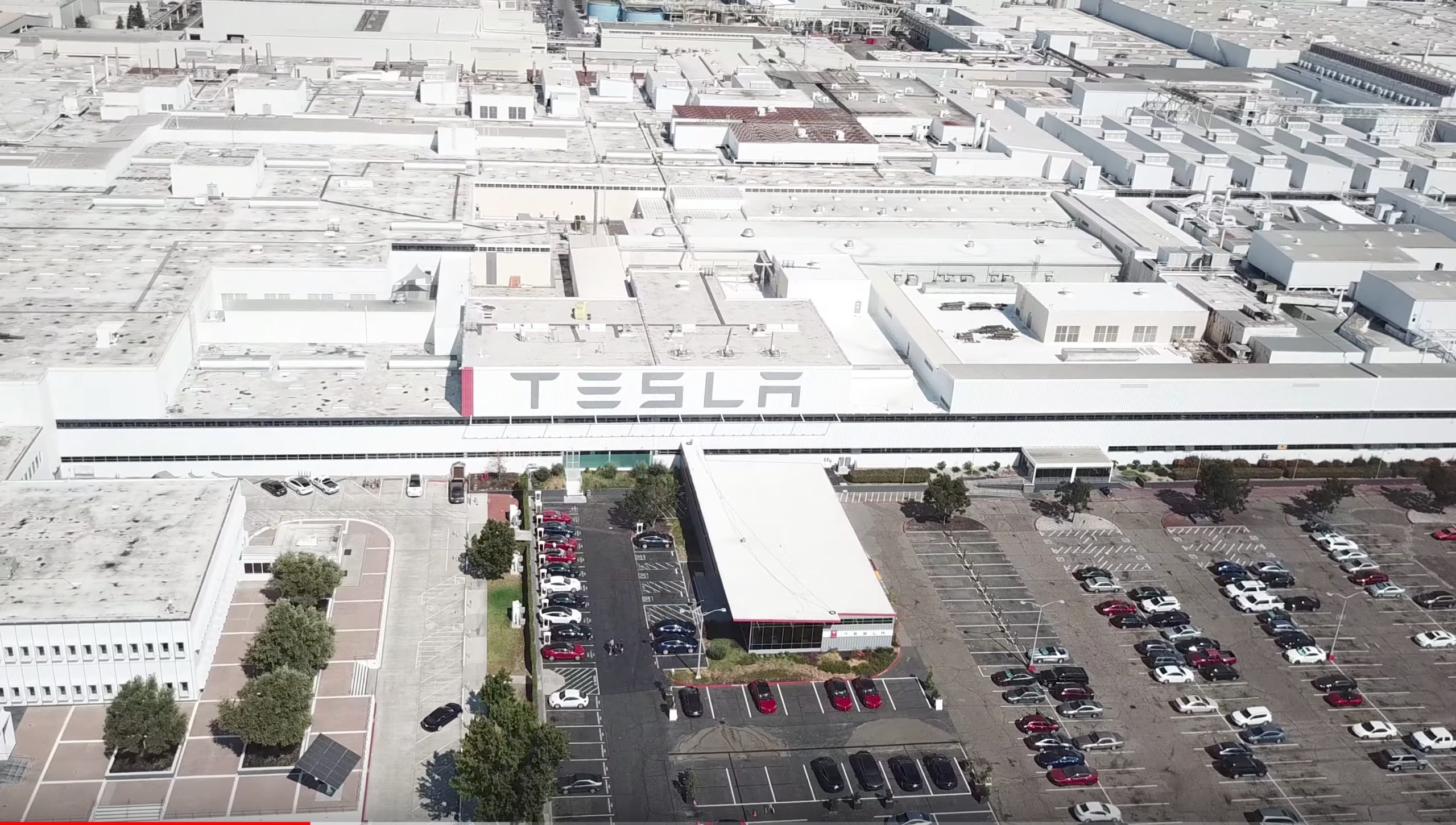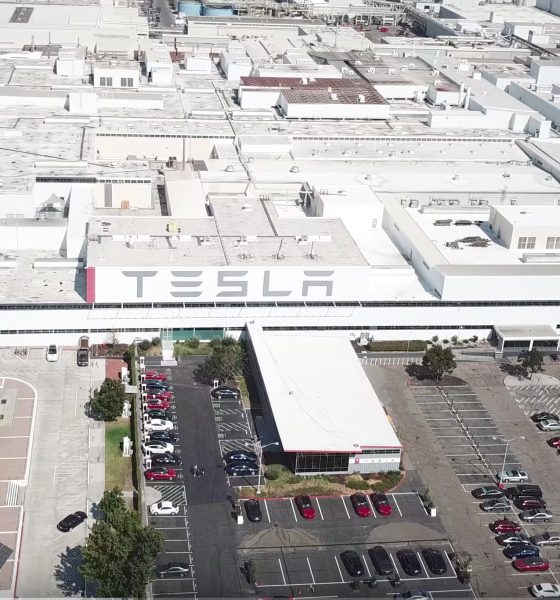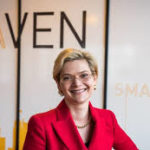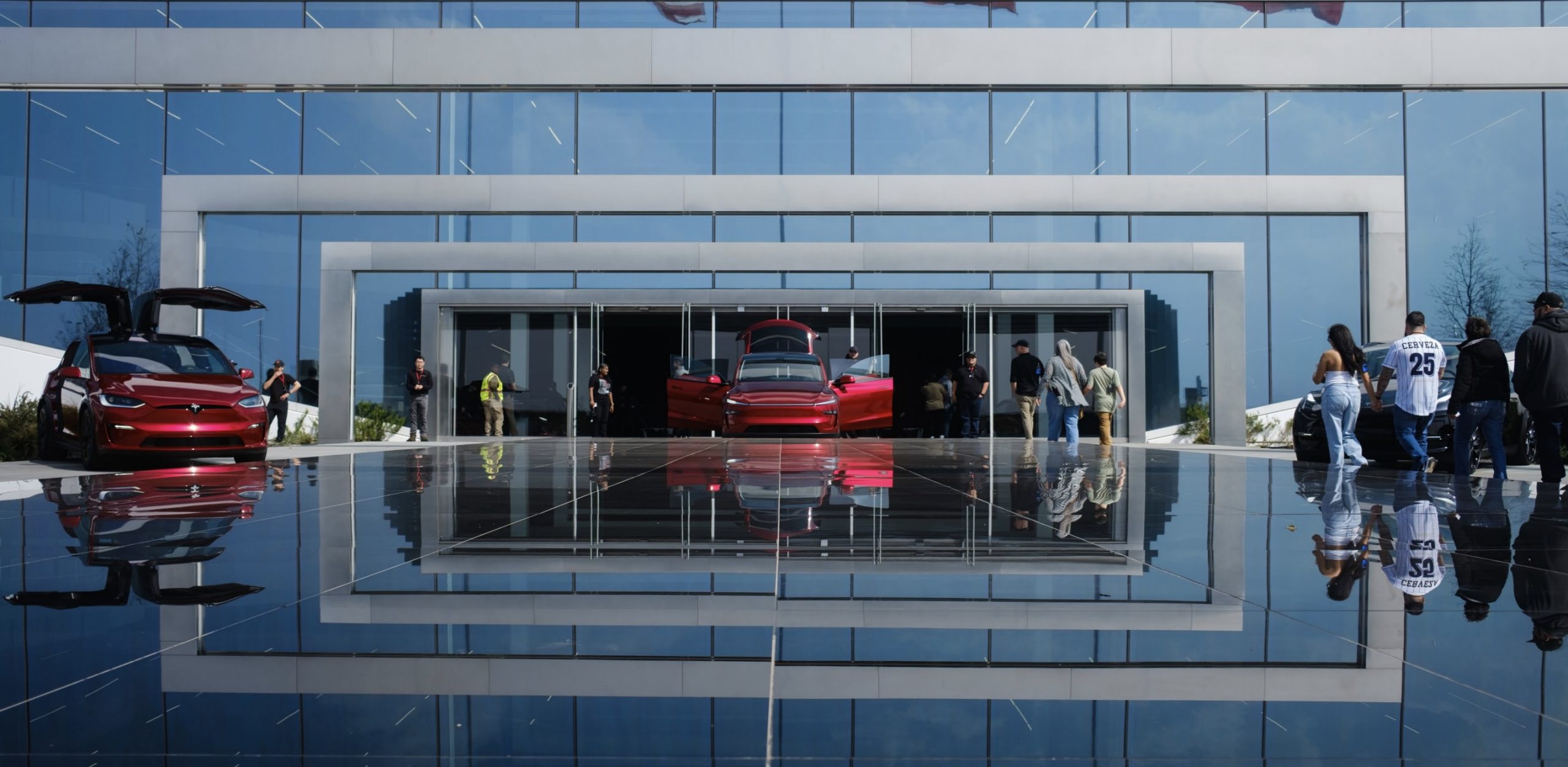

Investor's Corner
It’s clear, Tesla needs a COO and it can’t come soon enough
Tesla’s stock price has fallen nearly 24% in the last month, with the majority of the decline occurring this week. The drastic change isn’t really attributable to a single factor. The company is under pressure across the board, from Model 3 production, Solar Roof delays, concerns of a cash crunch, and delays in Autopilot’s Full Self-Driving capability. While there isn’t one solution to solve all of Tesla’s growing pains, hiring a Chief Operating Officer could help bring some operational stability to the company while curbing any overpromises made to customers and investors.
Elon Musk has been the CEO of Tesla for the past 9.5 years, and with a newly approved multi-billion dollar compensation plan, signs point to Musk taking the reins for at least another 10 years. However, Musk isn’t committing solely to Tesla as he’s also the CEO and CTO of SpaceX, CEO of Neuralink, CEO of The Boring Company, and one can argue that he’s also a full-time Twitter persona.
In his other companies outside of Tesla, Musk has a key executive running the business operations. President and COO Gwynne Shotwell joined SpaceX as the 11th employee in 2002 and has turned Musk’s passion for Space into a business with over $12 billion in order contracts.
Although Tesla has nearly six times more employees than SpaceX, the young space company operates efficiently and akin to a well-oiled machine, according to employees working at SpaceX. Yet, at the same time, Tesla has seen high executive turnover, as Musk holds tight control of the company’s day-to-day management.
Tesla’s need for a “Shotwell Equivalent” is more apparent than ever and for these key reasons:
- Model 3 Production: Bloomberg’s Model 3 production tracker shows that they are below 50% of their end of March production rate target. Musk should have never increased production targets on the vehicle and needed to be far more conservative with his estimates.
- Continuous delays with Autopilot technology: After ditching Mobileye’s technology in autopilot systems 21 months ago, Tesla’s development of the technology has slowed significantly. Musk first said that a Tesla would be able to drive coast-to-coast autonomously by the end of 2017, that has now been moved to mid-2018.
- Need to capitalize on Model S and Model X. Tesla has built a high-margin business out of their Model S and Model X vehicles. At current production rates, the company can generate $2.5 billion in free cash flow from those two vehicles alone. Tesla should use strategic marketing to boost demand for the vehicles, allowing the company to bring in more high-margin revenue.
- Acquisition of SolarCity: Tesla’s acquisition of solar installation company, SolarCity, has failed to provide meaningful value to shareholders. From the outside, it appears as though Tesla’s management team doesn’t have the bandwidth or cash to grow the Solar division. Both of Musk’s cousins Peter and Lyndon Rive have left Tesla after the acquisition to “focus on other projects”.
It would be foolish to think that a COO would solve all of the company’s issues, but having a dedicated executive to manage day-to-day operations could certainly help in preventing executive turnover while keeping employees focused on Tesla’s core mission: to accelerate the world’s transition to sustainable energy.
Who could be Tesla’s new Chief Operating Officer?
I’ve prepared a shortlist of executives that could potentially land themselves as Tesla’s first COO.
1. Mike Sievert (COO of T-Mobile US)
While Sievert doesn’t have automotive experience, he does bring strong experience managing a large employee base and has worked in the technology sector for the past 25 years. Sievert joined T-Mobile in late 2012 as CMO and became COO in 2015. Since joining T-Mobile, Sievert has been crucial to the company’s successful turnaround. And to boot, Sievert has experience working with outspoken CEOs who also moonlight as a Twitter personality.
2. Julia Steyn (VP Urban Mobility at General Motors and CEO of Maven)
 Steyn joined General Motors in 2012 as VP of Merger and Acquisitions and became the VP of Urban Mobility and CEO of GM’s Maven division in late 2015. She has led the company’s initiative into car-sharing with the Maven division and has played a key role in GM’s moves into autonomous vehicles. Prior to joining GM, Steyn was VP at Alcoa, one of the world’s largest aluminum suppliers. She also spent 7.5 years at Goldman Sachs as VP of the Global Natural Resources Group in the Investment Banking division.
Steyn joined General Motors in 2012 as VP of Merger and Acquisitions and became the VP of Urban Mobility and CEO of GM’s Maven division in late 2015. She has led the company’s initiative into car-sharing with the Maven division and has played a key role in GM’s moves into autonomous vehicles. Prior to joining GM, Steyn was VP at Alcoa, one of the world’s largest aluminum suppliers. She also spent 7.5 years at Goldman Sachs as VP of the Global Natural Resources Group in the Investment Banking division.
3. Alicia Boler Davis (EVP, Global Manufacturing and Labor Relations, General Motors)
 Boler Davis has spent the last 24 years at General Motors in a variety of capacities and became EVP of Global Manufacturing and Labor Relations in 2016. She oversees over 150,000 employees in the manufacturing division of GM across 150 different facilities. Prior to her current role, she was SVP of Global Connected Customer Experience where she played a role, like Julia Steyn, in GM’s expansion into car-sharing and autonomous vehicles. Her extensive engineering and managerial experience at GM could bring more order and stability as the company plans to expand production across the globe.
Boler Davis has spent the last 24 years at General Motors in a variety of capacities and became EVP of Global Manufacturing and Labor Relations in 2016. She oversees over 150,000 employees in the manufacturing division of GM across 150 different facilities. Prior to her current role, she was SVP of Global Connected Customer Experience where she played a role, like Julia Steyn, in GM’s expansion into car-sharing and autonomous vehicles. Her extensive engineering and managerial experience at GM could bring more order and stability as the company plans to expand production across the globe.
Obviously, this list isn’t comprehensive but should provide a starting point for potential hires. Who do you think should be hired as the first Chief Operating Officer at Tesla?

Investor's Corner
Tesla Q4 delivery numbers are better than they initially look: analyst
The Deepwater Asset Management Managing Partner shared his thoughts in a post on his website.

Longtime Tesla analyst and Deepwater Asset Management Managing Partner Gene Munster has shared his insights on Tesla’s Q4 2025 deliveries. As per the analyst, Tesla’s numbers are actually better than they first appear.
Munster shared his thoughts in a post on his website.
Normalized December Deliveries
Munster noted that Tesla delivered 418k vehicles in the fourth quarter of 2025, slightly below Street expectations of 420k but above the whisper number of 415k. Tesla’s reported 16% year-over-year decline, compared to +7% in September, is largely distorted by the timing of the tax credit expiration, which pulled forward demand.
“Taking a step back, we believe September deliveries pulled forward approximately 55k units that would have otherwise occurred in December or March. For simplicity, we assume the entire pull-forward impacted the December quarter. Under this assumption, September growth would have been down ~5% absent the 55k pull-forward, a Deepwater estimate tied to the credit’s expiration.
“For December deliveries to have declined ~5% year over year would imply total deliveries of roughly 470k. Subtracting the 55k units pulled into September results in an implied December delivery figure of approximately 415k. The reported 418k suggests that, when normalizing for the tax credit timing, quarter-over-quarter growth has been consistently down ~5%. Importantly, this ~5% decline represents an improvement from the ~13% declines seen in both the March and June 2025 quarters.“
Tesla’s United States market share
Munster also estimated that Q4 as a whole might very well show a notable improvement in Tesla’s market share in the United States.
“Over the past couple of years, based on data from Cox Automotive, Tesla has been losing U.S. EV market share, declining to just under 50%. Based on data for October and November, Cox estimates that total U.S. EV sales were down approximately 35%, compared to Tesla’s just reported down 16% for the full quarter. For the first two months of the quarter, Cox reported Tesla market share of roughly a 65% share, up from under 50% in the September quarter.
“While this data excludes December, the quarter as a whole is likely to show a material improvement in Tesla’s U.S. EV market share.“
Elon Musk
Tesla analyst breaks down delivery report: ‘A step in the right direction’
“This will be viewed as better than feared deliveries and a step in the right direction for the Tesla story heading into 2026,” Ives wrote.

Tesla analyst Dan Ives of Wedbush released a new note on Friday morning just after the company released production and delivery figures for Q4 and the full year of 2025, stating that the numbers, while slightly underwhelming, are “better than feared” and as “a step in the right direction.”
Tesla reported production of 434,358 and deliveries of 418,227 for the fourth quarter, while 1,654,667 vehicles were produced and 1,636,129 cars were delivered for the full year.
Tesla releases Q4 and FY 2025 vehicle delivery and production report
Interestingly, the company posted its own consensus figures that were compiled from various firms on its website a few days ago, where expectations were set at 1,640,752 cars for the year. Tesla fell about 4,000 units short of that. One of the areas where Tesla excelled was energy deployments, which totaled 46.7 GWh for the year.
🚨 Wedbush’s Dan Ives has released a new note on Tesla $TSLA:
“Tesla announced its FY4Q25 delivery numbers this morning coming in at 418.2k vehicles slightly below the company’s consensus delivery estimate of 422.9k but much better than the whisper numbers of ~410k as the…
— TESLARATI (@Teslarati) January 2, 2026
In terms of vehicle deliveries, Ives writes that Tesla certainly has some things to work through if it wants to return to growth in that aspect, especially with the loss of the $7,500 tax credit in the U.S. and “continuous headwinds” for the company in Europe.
However, Ives also believes that, given the delivery numbers, which were on par with expectations, Tesla is positioned well for a strong 2026, especially with its AI focus, Robotaxi and Cybercab development, and energy:
“This will be viewed as better than feared deliveries and a step in the right direction for the Tesla story heading into 2026. We look forward to hearing more at the company’s 4Q25 call on January 28th. AI Valuation – The Focus Throughout 2026. We believe Tesla could reach a $2 trillion market cap over the coming year and, in a bull case scenario, $3 trillion by the end of 2026…as full-scale volume production begins with the autonomous and robotics roadmap…The company has started to test the all-important Cybercab in Austin over the past few weeks, which is an incremental step towards launching in 2026 with important volume production of Cybercabs starting in April/May, which remains the golden goose in unlocking TSLA’s AI valuation.”
It’s no secret that for the past several years, Tesla’s vehicle delivery numbers have been the main focus of investors and analysts have looked at them as an indicator of company health to a certain extent. The problem with that narrative in 2025 and 2026 is that Tesla is now focusing more on the deployment of Full Self-Driving, its Optimus project, AI development, and Cybercab.
While vehicle deliveries still hold importance, it is more crucial to note that Tesla’s overall environment as a business relies on much more than just how many cars are purchased. That metric, to a certain extent, is fading in importance in the grand scheme of things, but it will never totally disappear.
Ives and Wedbush maintained their $600 price target and an ‘Outperform’ rating on the stock.
Investor's Corner
Tesla releases Q4 and FY 2025 vehicle delivery and production report
Deliveries stood at 406,585 Model 3/Y and 11,642 other models, for a total of 418,227 vehicles.

Tesla (NASDAQ:TSLA) has reported its Q4 2025 production and deliveries, with 418,227 vehicles delivered and 434,358 produced worldwide. Energy storage deployments hit a quarterly record at 14.2 GWh.
Tesla’s Q4 and FY 2025 results were posted on Friday, January 2, 2026.
Q4 2025 production and deliveries
In Q4 2025, Tesla produced 422,652 Model 3/Y units and 11,706 other models, which are comprised of the Model S, Model X, and the Cybertruck, for a total of 434,358 vehicles. Deliveries stood at 406,585 Model 3/Y and 11,642 other models, for a total of 418,227 vehicles.
Energy deployments reached 14.2 GWh, a new record. Similar to other reports, Tesla posted a company thanked customers, employees, suppliers, shareholders, and supporters for its fourth quarter results.
In comparison, analysts included in Tesla’s company-compiled consensus estimate that Tesla would deliver 422,850 vehicles and deploy 13.4 GWh of battery storage systems in Q4 2025.
Tesla’s Full Year 2025 results
For the full year, Tesla produced a total of 1,654,667 vehicles, comprised of 1,600,767 Model Y/3 and 53,900 other models. Tesla also delivered 1,636,129 vehicles in FY 2025, comprised of 1,585,279 Model Y/3 and 50,850 other models. Energy deployments totaled 46.7 GWh over the year.
In comparison, analysts included in Tesla’s company-compiled consensus expected the company to deliver a total of 1,640,752 vehicles for full year 2025. Analysts also expected Tesla’s energy division to deploy a total of 45.9 GWh during the year.
Tesla will post its financial results for the fourth quarter of 2025 after market close on Wednesday, January 28, 2026. The company’s Q4 and FY 2025 earnings call is expected to be held on the same day at 4:30 p.m. Central Time.









